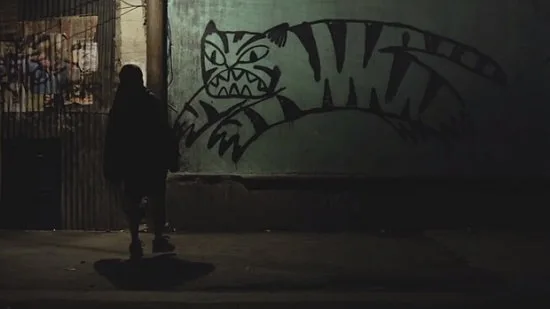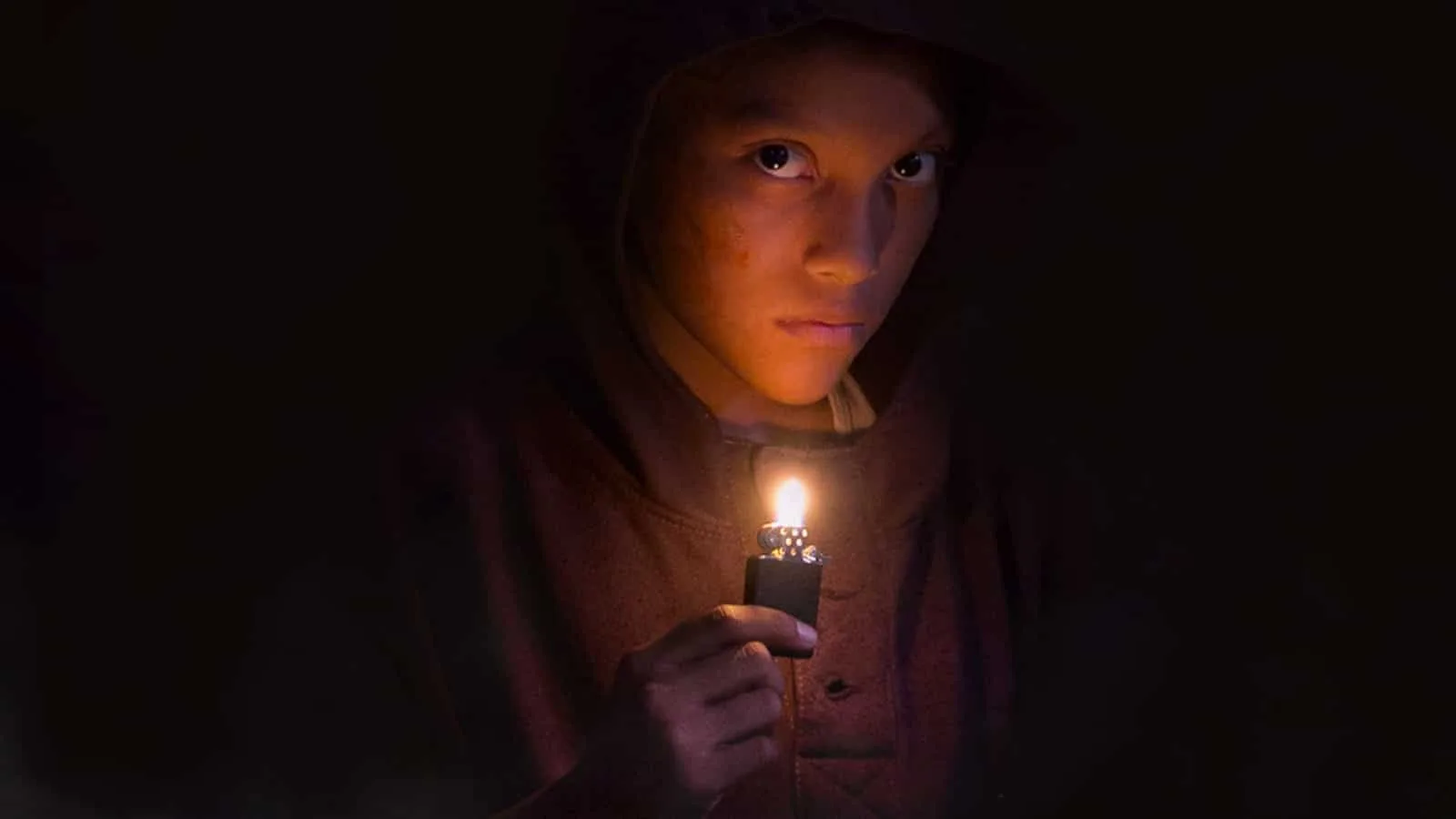
We start exactly as we go on for the duration of the film, where an everyday scene is conflated with something magical, before violence and terror break through into the scene and take their place alongside. Estrella (Paola Lara) is in the midst of a school lesson about storytelling, and she and her classmates are in the middle of planning fairy tales for a creative writing session when a cartel shoot-out sees the children and teacher diving for cover. Depressingly, as frightening as all of this is, the children know the drill, clambering under their desks and waiting for the gunfire to end. Estrella’s teacher, aiming to comfort the girl, reaches out to her and hands her three stubs of chalk, telling her that they represent magic wishes. It’s a kind gesture Estrella which is happy to accept, and it seems as though she has escaped unscathed, finally making her way to the home she shares with her mother.
But her mother isn’t home. Estrella is confused, and then scared. Her mother hasn’t left a note, and Estrella has no way of knowing where she’s gone. She decides to use one of her wishes, but quickly learns that these wishes have a bitter aftertaste; her mother does return, but in spectral form, driving her now-orphaned daughter out of the house. Hungry and lonely, the girl ventures out into a town completely dominated by the local gang, the Huascas; her only hope of support is from other children in a similar position, living rough as they steal to feed themselves; there’s no infrastructure here to protect them. A local gang, led by the fierce and indomitable Shine (Juan Ramón López) reject her at first – he and Estrella have already had a run-in – but later he begrudgingly lets her stay with them. If only things were even that simple.
Shine, in a moment of madness brought on by his own grief at losing his own parents the same way everyone seems to lose their parents round here, has stolen a gun and a mobile phone from one of this ghost town’s most infamous gangsters, Caco (Iannis Guerrero). When Caco sobers up, he sets about getting his property back with all the monomania of a powerful man, as he and his associates both know and own these streets (one of the film’s most poignant, and teeth-setting moments is when the children seek the help of some local police, to no avail; these cops are nothing compared to the cartels, so they don’t even try). The gang is looking for the children, and when they find them, they drive them out of the ramshackle cabin they’ve pieced together, a place where they’ve even stolen and set up a few luxury items like TVs. Yet fleeing this place is the only way they escape with their lives.
Clearly, there’s something very special about this phone. Shine won’t part with it, and Caco won’t rest until he gets it. Goodness knows why, as it seems very unlikely anyone would dare to do anything with the phone; perhaps it’s more a case of having his own way. If his gang can’t kill the children, then they’ll cage them and use them for…well, it’s intimated that bodily organs are being traded, and also that children are being sold into slavery. This is just one of the ways in which urban legend collides with evidence that these things are going on; the children whisper about them, but if they don’t move fast, then they fall victim to them. Desperate, and also a little resentful of the new girl, Shine tells Estrella that the only thing they can do now is to kill Caco. Somehow, she agrees, taking his gun into his house…but someone has got there before her. She lies about this, enjoying a brief moment of glory which can’t and doesn’t last. But soon another gangster wants that phone, and the children have to run again…

Magic realism of this kind allows us to see social issues through a new lens; key aspects of a story are brought into focus via the supernatural. For instance, The Lovely Bones allows the reader a new portal into grief and longing by making its narrator, Susie, deceased, having her introduce herself by saying, “I was fourteen when I was murdered…” The impossibility of her being able to reflect upon her own death in this way allows a new perspective on the lives of those left behind; it’s magical realism, and done well. This is also used to great effect in Tigers Are Not Afraid, which also allows unorthodox reflection upon death and loss, though perhaps its closer similarities to the work of Guillermo Del Toro, and specifically Pan’s Labyrinth, steal a little of its thunder: some scenes converge rather closely. This is unsurprising, given the earlier film also features an alienated girl, trying to navigate fraught times by trying to make sense of a fantastical world which only she can access. I also gather that director Issa López will now be working alongside Del Toro in future, which makes sense given their similar directorial styles.
However, whatever similarities there are, nothing can take away from the excellent performances given by the children of Tigers Are Not Afraid: you believe in every moment of peril and every moment of warmth. Seeing the little family unit get chased down is genuinely depressing, just as the adults here seem only able to vary between inert, maniacal, and dead. Just whilst I’m in the process of forging links to other works, it’s not hard to see commonality with Peter Pan and the Lost Boys. It seems like Tigers Are Not Afraid is steeped in fantasy elements, all brought to bear on a part of the world which has real monsters, often ignored by those not immediately faced with them. And maybe that’s the point. A stylish, savage and resourceful film, Tigers Are Not Afraid is well made and well-paced, definitely deserving of a watch, and even whilst you might be able to note its influences, it certainly does enough to stand on its own merits.
Tigers Are Not Afraid just screened at Sheffield’s Celluloid Screams; our thanks to all at the festival.
